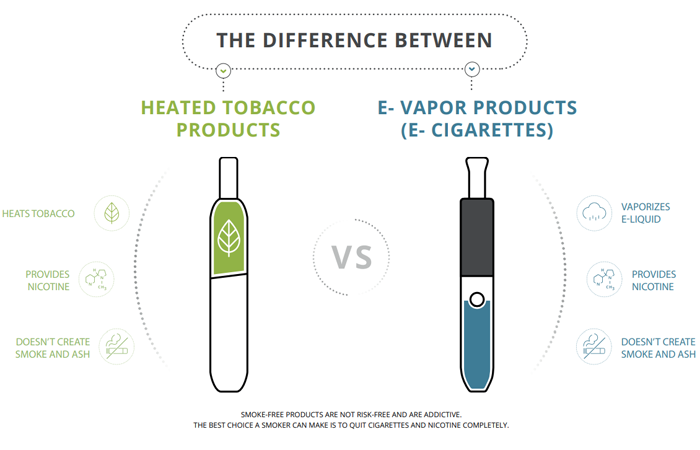In Practice
Follow this topic
Bookmark
Record learning outcomes
Sponsored Content
Globally, 1.3 billion people are estimated to use tobacco, with 1.1 billion of those being smokers.4,5 Smoking kills more than 8 million people annually.4
In the UK, despite the proportion of smokers declining steadily, the Latest data indicates that 13.3% of adults – around 6.6 million People – still smoke.
Around 15.1% of men and 11.5% of women smoke. Younger adults are the heaviest smokers; those aged 25 to 34 years have the highest proportion of current smokers (15.8%), compared the 65+ years age group who have the lowest (8.0%). 6
Harm reduction
While substitutes or alternatives for Smoking are popular, only around a third of smokers (34%) accurately believe that vaping is less harmful than Smoking. And only 11% of adults who smoke know that none or a small amount of the risks of Smoking are due to nicotine. That’s why an official review of vaping has proposed that communicating accurate information about the relative harms of vaping can help to correct misperceptions of vaping, particularly among adults.
There is a growing consensus that for adult smokers, completely switching to tobacco- or nicotine-containing products that do not burn tobacco has the potential to present less risk of harm than continued Smoking.
Epidemiology shows that Smoking increases the risk of developing a smokingrelated disease and increases the risk of early death. In addition, if a smoker quits, the risk of developing a Smoking-related disease decreases. 7,8 The best way for adult smokers to reduce their risks associated with Smoking is to quit tobacco and nicotine altogether. However, evidence has shown that many smokers don’t quit. 9
There is a huge reduction in the level of harmful chemicals inhaled with a THS device compared to cigarettes. 12 But IT is important to remind purchasers that neither heated tobacco products nor e-cigarettes are risk-free. Both product types, like cigarettes, generally contain nicotine. Nicotine is addictive and not riskfree, but IT’s not the primary cause of Smoking-related diseases.
Did you know?
- Unlike cigarettes, the use of other inhaled nicotine products has increased significantly. In 2017-18, an estimated 5.4% to 6.2% of all adults in England were vaping,14 and by 2021, the figure was between 6.9% and 7.1%.10
- In stop smoking services in 2020 to 2021, quit attempts involving a vaping product were associated with the highest success rates (64.9% compared with 58.6% for attempts not involving a vaping product).10
- The high street is still the most popular spending avenue to purchase vaping products with a third of vape spending being in physical shops (33% in 2021).15
Smoke and combustion-free alternatives
As a healthcare provider, it is important to recognise that for adult smokers who would otherwise continue to smoke cigarettes, switching to a smoke-free alternative could reduce their risk of smoking-related harm compared to continued smoking.
In recent years, an increasing number of smokers have switched from cigarettes to alternatives such as e-cigarettes, heated tobacco, or oral tobacco products to reduce the risk of harm to their health compared to continued smoking. These products could, indeed, complement existing tobacco control efforts and be part of an overall harm reduction strategy to benefit public health. Evidence from stop smoking services and the Cochrane review on electronic cigarettes for smoking cessation shows that vaping is effective for stopping smoking.10
UK governmental analysis has also found that “vaping poses only a small fraction of the risk of smoking and is at least 95% less harmful than smoking (that is, smoking is at least 20 times more harmful to users than vaping),” at least over the short to medium term.10
Tobacco smoke
The primary cause of smoking-related disease is the high levels of Harmful and Potentially Harmful Constituents (HPHCs) in smoke formed during the combustion of tobacco. The red glow of a cigarette is tobacco combusting at 800°C11 resulting with the smoke containing high levels of HPHCs. However, it is possible to heat tobacco to release nicotine without the combustion products of HPCHs and ash particulates.1
Those wanting an alternative to smoking tobacco now have a choice of several different types of inhalable nicotine products that avoid burning tobacco or producing smoke. They are designed to deliver a nicotine containing aerosol with a reduced level of harmful and potentially harmful toxicants compared to cigarette smoke.
Vaping products vaporise a nicotine-containing liquid as a heated aerosol. Another technology – heated tobacco system devices (THS) – uses blade or induction heating to heat a plug of real tobacco releasing nicotine-containing vapour without combustion.
Inspiration for cutting down on smoking
Extensive laboratory and clinical data are available supporting the potential of THS devices for risk reduction compared with continued cigarette smoking. The totality of evidence gathered so far demonstrates that a THS device is a better choice for adult smokers who would otherwise continue smoking cigarettes, and that switching completely to THS presents less risk of harm than continued smoking.
In addition, THS products compare favourably with e-cigarettes. A new study using a randomised controlled trial evaluating heated tobacco products and e-cigarettes showed that THS products are as effective as e-cigarettes for promoting abstinence from cigarettes among people not intending to quit.3
Taking all this into account, you may want to consider widening the range of smoking cessation products you can discuss or recommend for people wanting to cut down or stop smoking tobacco.
Vaping to stop smoking
- Around 3.1 million adults, between 6.9% and 7.1% of the population in England, were vaping in 2021
- Tank-type products remain the most popular type of vaping devices, used by 64.3% of adult vapers in 2022
- Vaping products remain the most common aid used by people to help them stop smoking
- In stop smoking services in 2020 to 2021, quit attempts involving a vaping product were associated with the highest success rates (64.9% compared with 58.6% for attempts not involving a vaping product).
Tobacco heating systems explained
Heated tobacco products do not combust tobacco so avoid the high temperatures where tobacco is burnt and therefore produce an aerosol that is not smoke. Studies indicate that the aerosol of these tobacco heating systems (THS) does not contain solid particles that are produced when tobacco is burned.2 And as combustion require oxygen, testing a THS device in an oxygen-free atmosphere shows the nicotine aerosol is released, showing that combustion does not occur when heating tobacco with a THS device.2
| Heated tobacco product types | |
| Tobacco heating system (THS) | THS uses an electronic heat-control technology to heat tobacco within a specific temperature range. |
| Pin-baed heating system (PHS) | PHS electrically heats the tobacco using either inductive or resistive heating. |
Indeed, by eliminating combustion, the levels of harmful chemicals are reduced on average by 95% in the THS aerosol compared to cigarette smoke.12 THS devices have actually been around for a decade in other parts of the world. Japan introduced them in 2014 and they have become popular for many reasons – for example, they don’t burn so there is no ash or smoke, and there is less smell than with cigarettes. More importantly, the data shows that THS products decrease smoking as they help ease smokers away from cigarettes.
References
1. Cozzani, V., et al. (2020). An experimental investigation into the operation of an electrically heated tobacco system. Thermochim Acta 684: 178475
2. Pratte, P., et al. (2017). Investigation of solid particles in the mainstream aerosol of the Tobacco Heating System THS2.2 and mainstream smoke of a 3R4F reference cigarette. Hum Exp Toxicol 36: 1115-1120.
3. Caponnetto, P., et al. ‘Comparing Effectiveness, Tolerability, and Acceptability of Heated Tobacco Products vs. refillable Electronic cigarettes For Cigarettes substitution: CEASEFIRE randomized controlled trial’. JMIR Public Health and Surveillance. 2023;9:e42628. This study was supported by an Investigator-Initiated Study award by Philip Morris Products SA (PMI.IIS.2016.006).
4. World Health Organization. Fact Sheets. Tobacco. May 24 2022.
5. The Lancet. Infographics; Global Health. ‘The global burden of tobacco’. May 27 2021.
6. Office for National Statistics. Adult smoking habits in the UK: 2021. Released December 6 2022.
7. Institute of Medicine (2012). Scientific standards for studies on modified risk tobacco products. The National Academies Press, Washington, DC.
8. Smith, M. R., et al. (2016). Evaluation of the Tobacco Heating System 2.2. Part 1: Description of the system and the scientific assessment program. Regul Toxicol Pharmacol 81 Suppl2: S17-S26
9. Centers for Disease Control and Prevention. Smoking & Tobacco Use. ‘Smoking Cessation: Fast Facts’. Page last reviewed March 21 2022.
10. Office for Health Improvement & Disparities. Research and analysis. ‘Nicotine vaping in England: 2022 evidence update summary’. September 29 2022.
11. Baker, R. R. (1975). Temperature variation within a cigarette combustion coal during the smoking cycle. High Temp Sci 7: 236-247.
12. Schaller, J. P., et al. (2016). Evaluation of the Tobacco Heating System 2.2. Part 2: Chemical composition, genotoxicity, cytotoxicity, and physical properties of the aerosol. Regul Toxicol Pharmacol 81 Suppl2: S27-S47.
13. Hartmann-Boyce, J., et al. ‘Electronic cigarettes for smoking cessation’. Cochrane Database of Systematic Reviews 2022, Issue 11. Art. No.:CD010216. DOI: 10.1002/14651858.CD010216.pub7. Accessed 08 May 2023.
14. Public Health England. Vaping in England: an evidence update. February 27 2019.
15. Centre for Economics and Business Research. ‘Economic impact assessment of the vaping industry. A Cebr report for the United Kingdom Vaping Industry Association September 2022’.
This article is funded by an educational grant from Philip Morris Limited.


